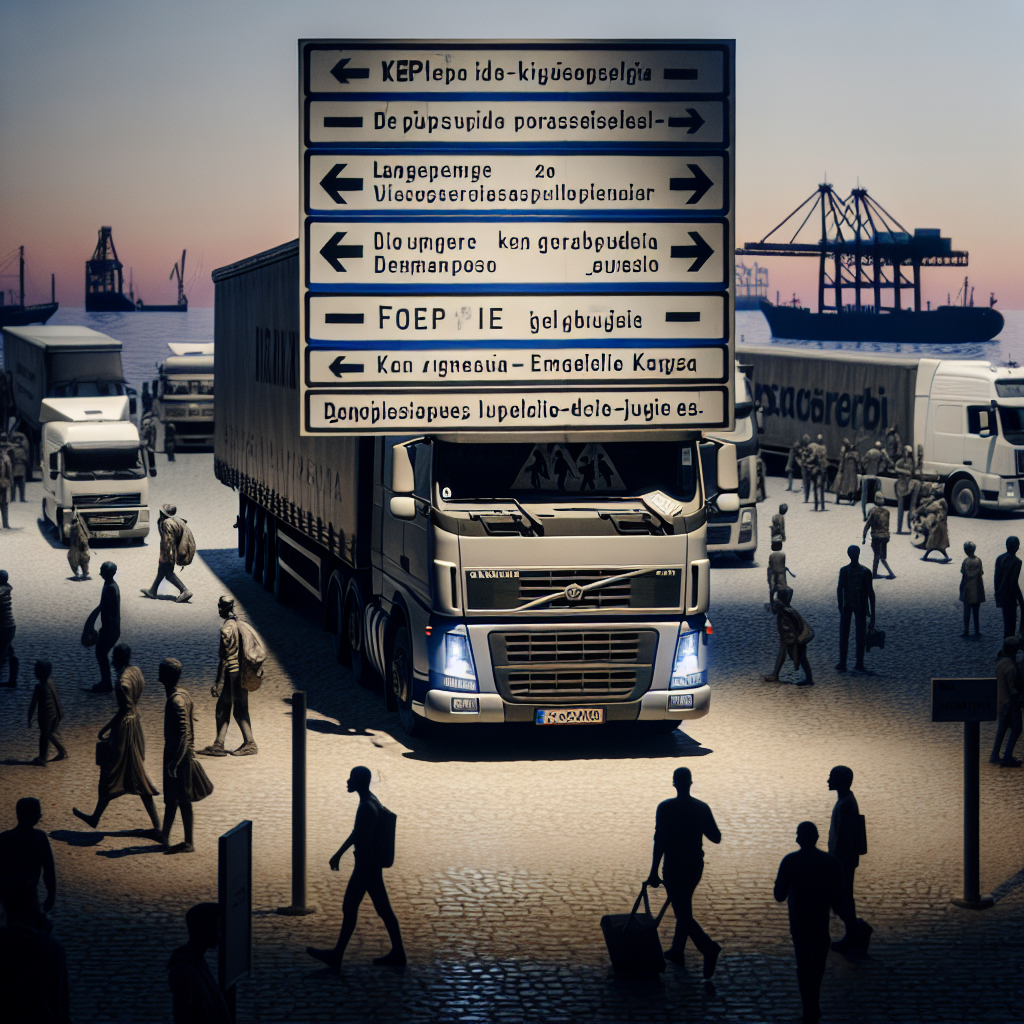The ongoing challenges at UK borders are prompting new and unusual measures in the fight against illegal immigration. In recent months, foreign lorry drivers traveling through northwestern France have been compelled to take extraordinary precautions to deter migrants attempting to enter the United Kingdom clandestinely. Around the port town of Ouistreham in Normandy, groups of migrants are frequently seen targeting trucks destined for ferries bound for Portsmouth, England. This surge in activity has shed new light on the extent to which both migrants and hauliers are willing to go regarding UK immigration.
As both sides adapt to changing circumstances, a complex pattern of deterrence and evasion emerges along the main continental routes. European lorry drivers, conscious of the risks associated with stowaways, are devising creative methods to protect their vehicles and livelihoods, while migrants continue to seek new opportunities despite tightening controls. The resulting interplay underscores not only the practical difficulties at border crossings but also the persistent allure of the UK for many people seeking a better life.
Deterring Stowaways with Multilingual Signage
To confront the ongoing issue of migrants attempting to board their vehicles, many European lorry drivers have started displaying highly visible signs on their trucks. These warnings, printed in both English and French and reading “We don’t go to UK,” are meant to inform potential stowaways that the vehicle is not heading across the Channel. By doing so, drivers hope to prevent unauthorized attempts at passage and reduce disruptions to their journeys.
The adoption of these signs has become widespread, with sightings reported as far away as Latvia, nearly 900 miles from Calais. Haulage companies that operate solely within continental Europe are particularly keen on this approach, aiming to avoid fines, legal issues, and delays caused by unwanted passengers. However, the effectiveness of this tactic is not absolute. In some instances, migrants still manage to board trucks, only to discover later that they have not left mainland Europe.
The UK’s Persistent Appeal
The ongoing efforts by drivers and migrants alike highlight a fundamental reality: the United Kingdom remains a highly attractive destination for those seeking new opportunities. Many migrants believe that the UK offers more favorable living and working conditions than other European nations. Reports suggest that those who successfully make it to Britain may find cash-in-hand work or apply for asylum, sometimes resulting in temporary accommodation in hotels during their application process. Recent statistics reinforce this trend—there were 5,874 detections of illegal immigrants at major ports like Calais, Dunkirk, and the Channel Tunnel in Coquelles in 2025, representing a 22% rise over 2023 figures.
Evolving Tactics and Persistent Border Challenges
The Issue of Undetected Arrivals
While much attention has focused on migrants crossing the Channel in small boats—often documented in official records—those arriving hidden within lorries may escape detection altogether. This creates an additional layer of complexity for UK authorities tasked with managing immigration and maintaining border security. The increasing sophistication of both deterrence measures by hauliers and evasion techniques by migrants highlights the ongoing nature of the challenge.
Key takeaways from recent developments include the enduring draw of the UK for migrants, the widespread adoption of practical deterrents such as multilingual signage by hauliers, and the ongoing difficulty in completely preventing illegal migration via road freight. Rising detection rates further underscore the intricate task faced by policymakers and border officials.
For those interested in exploring this issue further, additional insights can be found in the original article at The Sun. The story at continental ports is evolving rapidly as both migrants and officials respond to new policies, tactics, and enforcement efforts.
Looking ahead, it is clear that as migration patterns shift and demand for entry to the UK remains high, both practical measures and broader policy strategies will need to continue evolving. The effectiveness of warning signs and increased border vigilance will depend on sustained coordination among European nations and innovative approaches by border authorities.
Outlook for UK Border Security and Migration
The actions taken by foreign lorry drivers represent just one facet of a much larger challenge confronting UK border control. As European routes become more closely monitored and deterrent tactics become commonplace, both sides adapt in a dynamic contest of risk and opportunity. The interplay between migrant ambition and enforcement measures continues to shape outcomes at British borders.
Extended insights suggest that managing these migration flows will require constant adaptation—both in terms of practical roadside tactics and strategic policymaking. Ongoing coordination across borders and evolving legal frameworks will play a critical role in shaping future developments.
In wrapping up, it is evident that pressures at UK borders remain high and that hauliers’ preventive measures—while significant—are only part of a complex system involving migrants’ aspirations, official responses, and international dynamics.
The story unfolding at ports like Ouistreham is emblematic of broader European migration trends. As authorities work to maintain secure borders while upholding fair treatment for those seeking a better future, continued vigilance and adaptability will be essential.
Stay tuned for further updates and perspectives as the situation develops across UK borders.









Leave a Comment